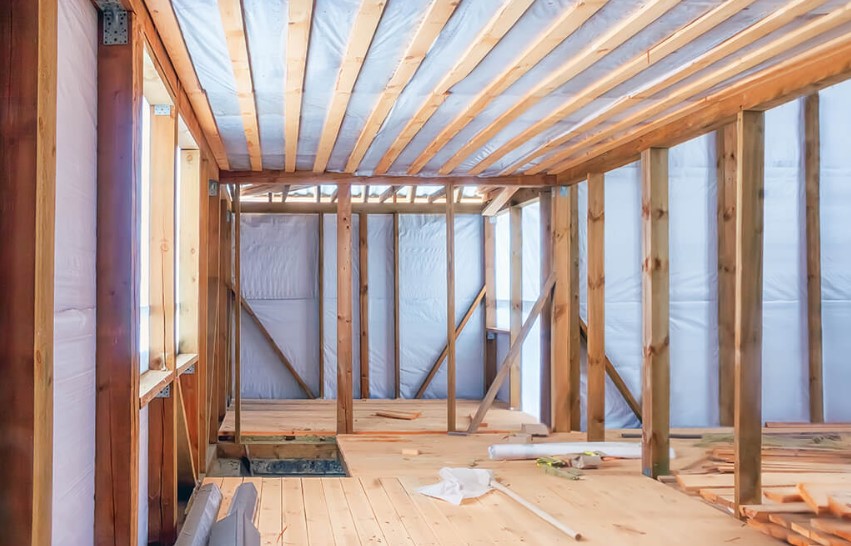
Overview
In England and Wales, if you intend to carry out any building work near or on your shared property border, sometimes known as a “party wall,” you are required to inform your neighbours of your plans.
Party walls are constructed on property that is owned by two or more parties and either:
Constitute a portion of a structure.
Do not comprise an integral element of a structure, such as a garden wall or fence (not wooden fences)
Party walls are also barriers that are built on the land of one owner but are utilised by other owners (two or more) to divide their structures.
Structures within parties
You also have the option of having a “party structure.” This might be a floor or any other structure that divides buildings or portions of structures that are owned by various people, such as apartments or condos. Party Wall Surveyor Experts Hampshire
Work that you are obligated to discuss with your next-door neighbour.
If you wish to, you need to let your neighbour know that:
Construct anything on or near the line dividing your two properties.
perform maintenance or construction on an existing party wall or party structure.
excavate the ground beneath and close to the foundation level of their property.
The following are some examples of this kind of work:
Erecting a brand-new wall
A hole was cut through the party wall.
lowering, raising, or digging into a party wall; removing chimneys from a party wall; tearing down and rebuilding a party wall
When and how to inform them are the questions.
You are required to give notice to your neighbour anywhere from two months to one year in advance of when you plan to begin building works. Include the things that you have planned.
Prior to giving notice in writing, you may want to describe the work that you intend to carry out by speaking with your neighbour about it beforehand.
Finding common ground with your neighbours and coming to an agreement
Once you’ve provided notice your neighbour can:
A written approval should be given.
Refusing to agree will kick off the process of resolving any disputed issues.
Serve a counter notice asking for extra work to be done at the same time, stating that they will be responsible for the payment of these additional works if they profit from the works being done.
Your next-door neighbour is required to confirm their agreement with your notice to you in writing within 14 days, and you are also required to do the same with any counter notice that you issue. It is necessary to serve a counter notice within one month after receiving the initial notice.
In the event that you are unable to concur
If you and your neighbour are unable to come to an agreement, you will need to hire a surveyor. You may choose to select a surveyor jointly or each of you may choose to choose their own. After that, the surveyors will reach a consensus on what is called a “party wall award.” Gloucestershire Party Wall Surveyor
The following is stated in this official document:
What kind of labour has to be done
who will pay for what portion, when it will be carried out, how much will be paid, who will pay for what, and how much will be paid (including costs for the surveyor)
It is not possible for you to serve as your own surveyor.
In the event that your neighbour does not hire a surveyor,
In the event that your neighbour refuses or is unable to appoint a surveyor on their own, you have the ability to do so on their behalf.
When carrying out construction work, you are required to:
Avoid incurring extra discomfort
You are responsible for ensuring that the construction doesn’t cause any harm to the property of your neighbour, as well as for repairing or compensating any damage that does occur.
Permission to enter the property of your neighbour
In order for the building works to be completed, your neighbour is obligated to provide access to their property for surveyors and workers during normal business hours. Unless it is an emergency, you are required to give them fourteen days’ notice.
Do I need an agreement for the party wall?
When is it necessary to have a party wall notification or partisan wall settlement (which is referred to as a party wall award in its technical form)? Our guide provides you with all the information you want to secure the appropriate authorizations to carry out your building works so that you can get started. And if you do require one, instructions on how to locate a party wall surveyor.
When is it necessary for me to have a party wall agreement?
If you want to perform any building work near or on a party wall, you are required to have a party wall agreement in place first.
A party wall is the shared wall that separates the dwellings of two independent owners. This type of wall is typically seen in a terraced or semi-detached housing arrangement.
It also includes garden walls that are constructed across a border and excavations near to a neighbor’s land (excavations that are within three to six metres of your neighbor’s property, depending on the depth of the new foundations).
Loft conversions, the installation of damp proof courses, and the digging of new foundations are some of the most typical types of building work that need a Party Wall Agreement to be completed inside of a private residence (as would be required in building an extension).
Plastering, electrical installation, or drilling of walls and doors to fit dining units or shelves, for example, do not require a party wall agreement since these types of work are considered to be minor and do not affect the party wall.
Obtaining authorization to carry out building works on the party wall
In order for the homeowner (Building Owner) to begin construction on the party wall, he or she must first get a formal Party Wall Agreement from each of the neighbours who would be impacted (Adjoining Owners).
Alternately, a surveyor is need to be hired in order to compile a Party Wall Award
Obtaining agreement
Following the expiration of the fourteen-day period during which a neighbour is given the opportunity to react to a party wall notification, one of the following may occur:
I The neighbour offers written consent to the homeowner on the condition that the homeowner would fix any issues.
In situations as simple as these, it is not necessary to hire a party wall surveyor or get a party wall award.
The homeowner is responsible for taking current photographs of the party wall and, ideally, should have agreed upon and written records of any cracks, with copies for both parties.
Another option is to hire a surveyor to conduct an inspection and create a condition report in order to reduce the likelihood of disagreements in the future. This should be taken care of only a few minutes before the job begins.
Keeping up positive ties with those that live nearby you
Have a conversation with your neighbour face to face before you send a notification about a party wall through their letterbox, since this might be perceived as a threatening move.
A cup of tea shared between friends helps to cultivate goodwill and calm concerns. Display drawings, provide an explanation of the proposed works, and state that an official notification will be provided at a later date.
It is fair for your neighbour to request the contact information of your surveyor and/or building firm for the purposes of obtaining more information and gaining assurance.
Mistakes that are frequently made I failing to give sufficient warning
ii) failing to tell any or all of the neighbours who were impacted. This applies to the freeholder as well as anyone who has a leasehold that is greater than one year. Depending on the improvements being done, your neighbours on both sides of the terraced home in which you reside might be affected. If a homeowner lives next to apartments, it’s possible that they may need to provide notice to more than one person. Use the Land Registry to research who owns a piece of property.
iii) failing to provide a detailed enough description of the job to be done or failing to provide an enough amount of information. Notifications about excavations, for instance, are required to provide comprehensive structural specifications.
iv) not utilising the normal form of notification, or using the incorrect form. When excavating foundations, a different kind of notification is required than when excavating party walls.
There may be a requirement to serve more than one sort of notice on each neighbour who is impacted by a single construction project.
